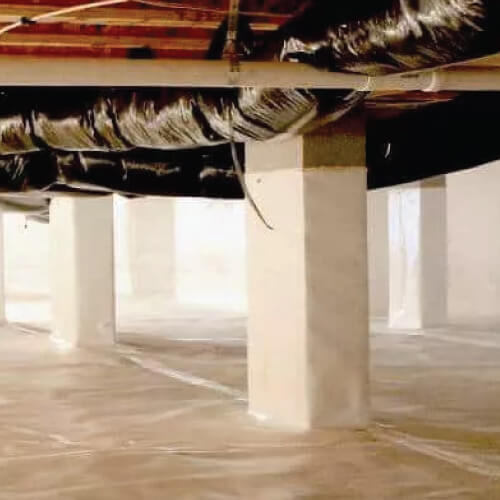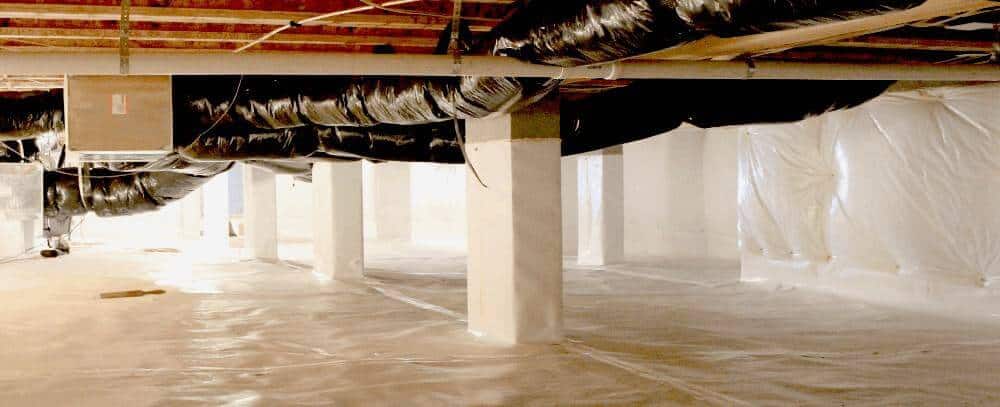A Fully Encapsulated Crawl Space for Lasting Home Protection
Many homes in the Carolinas are built with crawl spaces, designed to provide foundational support and access to essential home systems like HVAC, plumbing, and electrical wiring. However, an unsealed crawl space can become a breeding ground for moisture-related issues, leading to mold growth, wood rot, and even structural damage. Over time, unchecked humidity can weaken your home’s foundation, attract pests like termites, and negatively impact indoor air quality.
Moisture Loc specializes in Crawl Space Encapsulation, a proven solution that seals out excess moisture, improves air quality, and protects your home’s foundation. Our GreenSpace™ Sealed Crawl Space System is designed to create a fully controlled environment beneath your home, eliminating the risks of moisture buildup while enhancing energy efficiency. By encapsulating your crawl space, you’re investing in long-term home protection, healthier indoor air, and lower energy bills.
What is Crawl Space Encapsulation?
A damp, unprotected crawl space can be a hidden source of moisture problems, musty odors, and even structural damage in your home. Crawl space encapsulation is a proactive solution that seals off your crawl space from excess moisture, humidity, and outdoor elements, creating a cleaner, drier environment beneath your home.
Encapsulation involves installing a powerful moisture barrier across the crawl space floor and walls to completely seal the area. Before the encapsulation is complete, our technicians may install drainage systems to remove any standing water. A polyethylene vapor barrier is then applied to all surfaces, with sealing tape reinforcing protection to ensure no moisture seeps through.
However, a moisture barrier alone doesn’t eliminate humidity—it only blocks new moisture from entering. To ensure long-term humidity control, a dehumidifier is installed to regulate vapor levels, keeping your crawl space dry and your home protected.
Our Crawl Space Encapsulation System for Total Moisture Control
Moisture Loc specializes in professional crawl space encapsulation, offering total moisture control with our GreenSpace™ Sealed Crawl Space System. Designed to combat high humidity, mold growth, and standing water issues, this system creates a temperature-controlled crawl space that locks out moisture, improves air quality, and protects your home’s foundation.
By completely sealing and conditioning your crawl space, our GreenSpace™ Encapsulation System spares homeowners from structural damage, moisture-related health concerns, and rising energy costs—ensuring a healthier, stronger home for years to come.
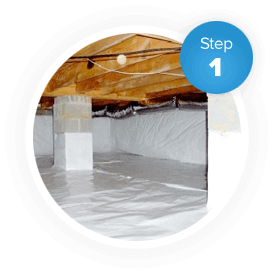
SEAL SEAMS OF VAPOR BARRIER
The first step in our sealed crawl space encapsulation is installing a durable poly liner in the crawl space. Our crawl space encapsulation technicians place a 17-mil poly liner along the interior crawl space walls, around the interior crawl space piers, and over 100% of the crawl space floor. We tape and caulk the liner so your crawl space stays fully encapsulated. As a result, moisture doesn’t rise from the ground and into your floor system, insulation, and home.
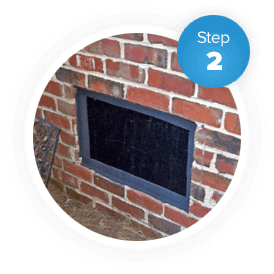
SEAL CRAWL SPACE VENTS
The next step in sealing a crawl space is ensuring no humid outside air is getting into your crawl space. We secure the vents with a commercial-grade insulating board so that hot or cold air from outside will not get into your crawl space.
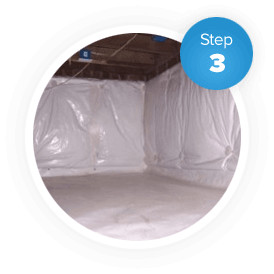
INSULATE WALLS (OPTIONAL)
After sealing the vents, we recommend adding insulation to reinforce your crawl space encapsulation. Adding insulation to crawl space walls improves thermal resistance in masonry walls. As a result, it should significantly improve your home’s energy efficiency and conserve heating and cooling costs.
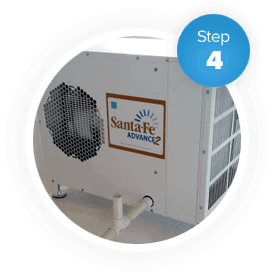
INSTALL ENERGY STAR DEHUMIDIFIER
A dehumidifier is an essential step in crawl space encapsulation. Moisture Loc uses dehumidifiers specifically for crawl space or basement applications. The Santa-Fe Dehumidifier is placed into the crawl space to dry out humid air and keep moisture away. This dehumidifier includes a fan that draws in moist, humid air through a cold evaporator coil, effectively cooling the air below its dew point. Once the air temperature is below the dew point, it turns into water, which is collected and automatically drained.
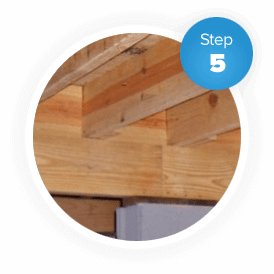
REMOVE FLOOR JOIST INSULATION
If insulation is aged or damaged due to high moisture, it can cause Fungi growth, create cold or hot spots in your floors, and increase energy loss through weak areas in your flooring.
Removing the old or damaged insulation and replacing it with new insulation improves heating and cooling properties in your home and reduces your risk of Fungi growth.
Why Crawl Space Encapsulation is a Smart Investment
Encapsulating your crawl space does more than just control moisture—it provides long-term protection for your home’s air quality, structural integrity, and energy efficiency.
Prevent Mold & Mildew Growth
By eliminating excess moisture, encapsulation stops mold and mildew before they can take hold, improving indoor air quality and reducing health risks.
Protect Your Home’s Structural Integrity
Moisture can weaken floor joists, insulation, and even your foundation over time. Sealing your crawl space prevents costly structural damage and ensures long-term stability.
Improve Indoor Air Quality
Since up to 50% of the air in your home originates from the crawl space, encapsulation helps eliminate allergens, musty odors, and airborne pollutants.
Keep Pests & Termites Out
Damp crawl spaces attract unwanted pests like termites, rodents, and insects. By sealing off this environment, you make your home less hospitable to infestations.
Lower Your Energy Bills
Encapsulation helps regulate temperature and humidity, reducing the strain on your HVAC system and leading to lower heating and cooling costs year-round.
Without encapsulation, your home may face serious long-term issues, including:
- Musty odors spreading into your living space
- Metal components rusting due to high humidity
- Trapped soil gases affecting indoor air quality
- Buckled hardwood floors from moisture-related expansion
Many of these warning signs aren’t noticeable in the early stages—but by the time they become severe, repairs can be costly and unavoidable. Encapsulation is a proactive solution that protects your home before these issues arise.
Proudly Serving Charlotte, NC & Surrounding Areas
Moisture Loc provides expert crawl space encapsulation services throughout Charlotte, NC, and nearby regions. Our team understands the unique challenges of moisture control in North & South Carolina’s humid climate, delivering customized solutions to protect your home’s foundation and air quality.
Primary Service Areas:
Charlotte, NC
Mecklenburg County, NC
Gastonia, NC
Concord, NC
Rock Hill, SC
Why Choose a Local Expert?
- Deep understanding of Charlotte’s climate challenges
- Trusted by homeowners for over 35 years
- Fast response times & dedicated service
No matter where you are in the Greater Charlotte area, our crawl space encapsulation experts are ready to help!
ANNUAL INSPECTION & MAINTENANCE PLAN
Moisture Loc offers an Annual Inspection and Maintenance Plan to give you peace of mind that your system is at peak performance. Our trained technicians will return a year after installation to check your system and ensure your investment works effectively.
A PERMANENT SOLUTION TO HIGH HUMIDITY
The GreenSpace™ Sealed Crawl Space Encapsulation is our best option for a permanent solution to humidity in crawl spaces. High humidity levels lead to mold growth and moisture, eventually causing structural damage to your home. Therefore, it is essential to repair this issue as it will continually worsen.
Request a free consultation to find out if the GreenSpace™ Sealed Crawl Space encapsulation is the right solution for your crawl space.

